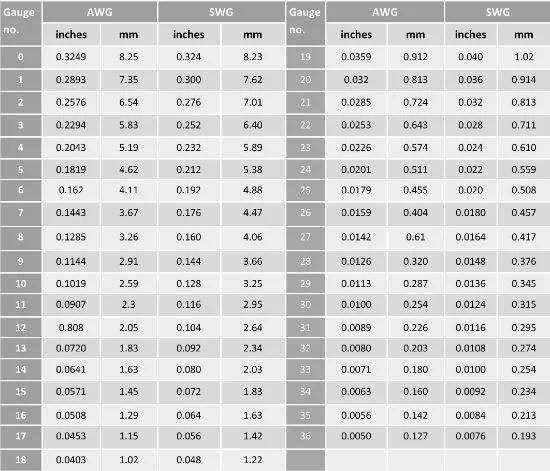Wire gauge size refers to the measurement of the diameter of the wire. This is an important factor to consider when choosing the right wire for a specific application. Wire gauge size is usually represented by a number. The smaller the number, the larger the wire diameter. The larger the number, the smaller the wire diameter. In order to understand wire gauge dimensions in order, it is important to have a basic understanding of the wire gauge system.
The wire gauge system is a standardized method of measuring wire diameter and is commonly used in the United States. The most widely used wire gauge sizing standard is the American Wire Gauge (AWG) system. In AWG systems, wire gauge sizes range from 0000 (4/0) to 40, where 0000 is the maximum wire diameter and 40 is the minimum wire diameter.

Table 1: wire gauge chart
In the field of metrology, i.e., the scientific study of measurement, wire gauges are used to measure the diameters or cross-sectional area of round, solid, nonferrous, electrically conducting wires. By utilizing the diameter or cross-sectional area of the wire, wire gauges assist users in knowing the current-carrying capacity of electrically conducting wires.
Wire gauge sizes not only determine how much current can safely be transmitted or passed through the wire, but the resistance of the wire along with its weight per unit of length, too. A wire’s gauge also indicates the thickness of the conductor that electrons flow through. For optimum transmission, a wire’s conductor must be increased in order to reduce resistance.
Understanding wire gauge sizes in order is critical for a variety of applications such as electrical wiring, automotive wiring, etc. Choosing the correct wire gauge size is critical to ensuring that the wire can safely carry the required current without overheating or causing voltage drops.
Post time: May-03-2024
